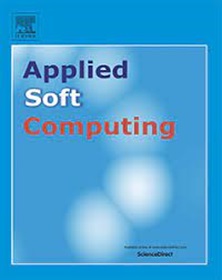基于自适应图神经网络的偏好学习,用于多标准决策支持
IF 6.6
1区 计算机科学
Q1 COMPUTER SCIENCE, ARTIFICIAL INTELLIGENCE
引用次数: 0
摘要
智能决策通过数据分析、模型预测和自动化流程帮助决策者(DMs)做出选择。这一领域的核心是两个关键概念:多标准决策(MCDM)和偏好学习(PL)。虽然多标准决策(MCDM)和偏好学习(PL)都旨在开发决策模型,根据观察到的或揭示的偏好对备选方案进行排序,但它们的侧重点有所不同。MCDM 侧重于管理者的视角,而 PL 则强调模型驱动的方法。这种分歧给这些方法的整合带来了巨大挑战,尤其是如何确保整合后的方法在复杂的决策场景中保持可扩展性和可解释性。为了弥补这一差距,我们的研究引入了图结构来构建决策问题,并提出了一种采用图神经网络(GNN)的新型 PL 方法,用于多标准决策支持。该方法以 "通过与理想解决方案相似度排序偏好技术"(TOPSIS)为基础,将自适应 GNN 模型与权重确定模型相结合。GNN 模型从备选方案的标准和类别特征中更新嵌入,利用注意力机制自适应地评估其重要性。同时,权重确定模型包含一个权重神经网络模块,用于设置客观标准权重,以及一个基于博弈论的模块,用于计算综合标准权重。该方法不仅继承了决策模型的可解释性和直观性,还利用了机器学习的计算效率和高准确性。在基准数据集上进行的实验中,我们的方法表现出显著的性能改进,尤其是在与排名相关的评价指标方面,比最佳基线高出 5.78%。本文章由计算机程序翻译,如有差异,请以英文原文为准。
Preference learning based on adaptive graph neural network for multi-criteria decision support
Intelligent decision-making assists decision-makers (DMs) in making choices through data analysis, model prediction, and automated processes. Central to this field are two key concepts: multi-criteria decision making (MCDM) and preference learning (PL). While MCDM and PL both aim to develop decision models that rank alternatives based on observed or revealed preferences, they diverge in focus. MCDM concentrates on the DMs' perspectives, whereas PL emphasizes model-driven approaches. This divergence presents significant challenges in integrating these methodologies, particularly in ensuring the integrated method remains scalable and interpretable amidst the complexity of decision scenarios. To bridge this gap, our study introduces the use of graph structures to frame decision problems and proposes a novel PL method employing graph neural network (GNN) for multi-criteria decision support. This method is anchored in the Technique for Order Preference by Similarity to an Ideal Solution (TOPSIS) technique and combines an adaptive GNN model with a weight determination model. The GNN model updates embeddings from the alternative's criteria and category features, utilizing an attention mechanism to adaptively assess their importance. Concurrently, the weight determination model contains a weight neural network module to set objective criterion weights and a game theory-based module for calculating combined criterion weights. The method not only inherits the interpretability and intuitive appeal of decision models but also leverages the computational efficiency and high accuracy of machine learning. In experiments conducted on benchmark datasets, our method exhibits significant performance improvements, especially in ranking-related evaluation metrics, outperforming the best baseline by 5.78 %.
求助全文
通过发布文献求助,成功后即可免费获取论文全文。
去求助
来源期刊

Applied Soft Computing
工程技术-计算机:跨学科应用
CiteScore
15.80
自引率
6.90%
发文量
874
审稿时长
10.9 months
期刊介绍:
Applied Soft Computing is an international journal promoting an integrated view of soft computing to solve real life problems.The focus is to publish the highest quality research in application and convergence of the areas of Fuzzy Logic, Neural Networks, Evolutionary Computing, Rough Sets and other similar techniques to address real world complexities.
Applied Soft Computing is a rolling publication: articles are published as soon as the editor-in-chief has accepted them. Therefore, the web site will continuously be updated with new articles and the publication time will be short.
 求助内容:
求助内容: 应助结果提醒方式:
应助结果提醒方式:


